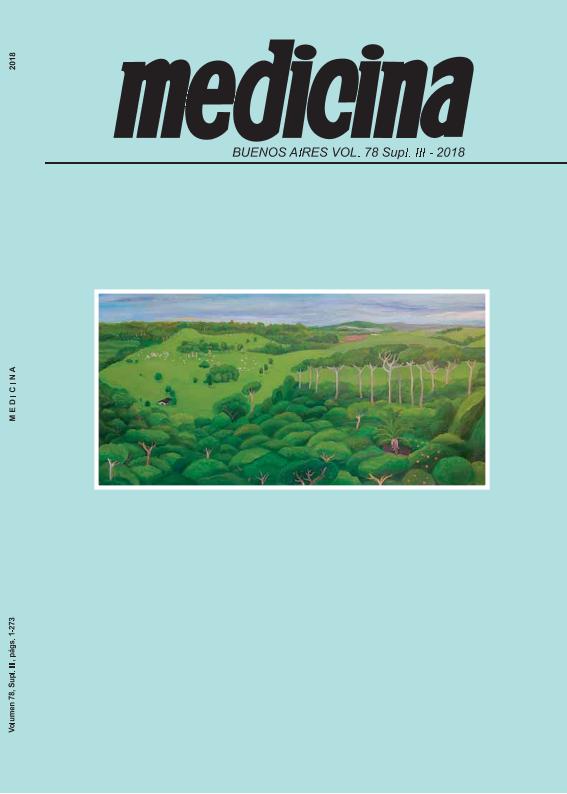Evento
Theoretical and biological study of potencial BRAFV600E inhibitors
Campos, Ludmila Estefanía ; Garibotto, Francisco Matías
; Garibotto, Francisco Matías ; Perez, Celia Noemí
; Perez, Celia Noemí ; Falcón, Cristian Roberto
; Falcón, Cristian Roberto ; Alvarez, Sergio Eduardo
; Alvarez, Sergio Eduardo ; Enriz, Daniel
; Enriz, Daniel
 ; Garibotto, Francisco Matías
; Garibotto, Francisco Matías ; Perez, Celia Noemí
; Perez, Celia Noemí ; Falcón, Cristian Roberto
; Falcón, Cristian Roberto ; Alvarez, Sergio Eduardo
; Alvarez, Sergio Eduardo ; Enriz, Daniel
; Enriz, Daniel
Tipo del evento:
Reunión
Nombre del evento:
LXII Reunión Anual de la Sociedad Argentina de Investigación Clínica; LXVI Reunión Anual de la Sociedad Argentina de Inmunología y Reunión Anual de la Sociedad Argentina de Fisiología
Fecha del evento:
14/11/2018
Institución Organizadora:
Sociedad Argentina de Investigación Clínica;
Sociedad Argentina de Inmunología;
Sociedad Argentina de Fisiología;
Sociedad Argentina de Virología;
Asociación Argentina de Nanomedicinas;
Título de la revista:
Medicina
Editorial:
Fundación Revista Medicina
ISSN:
1669-9106
Idioma:
Inglés
Clasificación temática:
Resumen
Around 50% of melanoma patients express the mutated protein kinase BRAFV600E which in turn induces cell survival and proliferation through ERK pathway activation. Lately, two small BRAF inhibitors (BRAFi) have been approved for the treatment of metastatic melanoma: Vemurafenib and Dabrafenib. Considering that tumors become resistant after a few months of treatment and in some cases tumors are intrinsically resistant to BRAFi, new therapeutic options should be analyzed. Thus, by a combination of theoretical and experimental studies our aim was to find new potential BRAF inhibitors. Based on virtual screening, docking and molecular dynamics approaches we selected a panel of 20 different compounds. To test its potential BRAFi activity, biological assays were conducted in melanoma cell line Lu1205 which express the mutant kinase BRAFV600E, and Vemurafenib was employed as positive control of all the experiments performed. In particular, ERK phosphorylation, an indirect measure of BRAFV600E activity, was determined by western blot. In addition, MTT assay was conducted to study the effect of the compounds on cell viability. Our results show that 6-OH-2-carboxianilide derivatives 10C and 10F reduce significantly ERK phosphorylation at 1 μM (p<0.05). In addition, compound 10C also reduce cell viability (p<0.001). Taking together, these results allowed us to identify the compound 10C as a new potential BRAFi that reduce ERK phosphorylation and cell viability. Moreover, this compound can be modified in order to design new chemical structures with improved activity.
Palabras clave:
Melanoma
,
BRAF V600E
,
Vemurafenib
,
ERK phosphorylation
,
cell viability
Archivos asociados
Licencia
Identificadores
Colecciones
Eventos(IMIBIO-SL)
Eventos de INST. MULTIDICIPLINARIO DE INV. BIO. DE SAN LUIS
Eventos de INST. MULTIDICIPLINARIO DE INV. BIO. DE SAN LUIS
Citación
Theoretical and biological study of potencial BRAFV600E inhibitors; LXII Reunión Anual de la Sociedad Argentina de Investigación Clínica; LXVI Reunión Anual de la Sociedad Argentina de Inmunología y Reunión Anual de la Sociedad Argentina de Fisiología; Mar del Plata; Argentina; 2018; 82-82
Compartir



